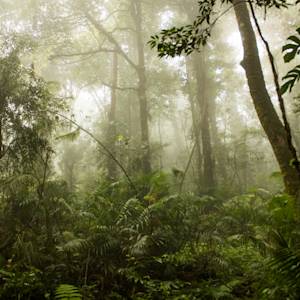Eastern Himalayas
2023 CE • Bhutan, India, Nepal, China, and Pakistan
"The Himalayas is the highest mountain range in the world, and has 9 out of 10 of the world’s highest peaks, including Mount Everest." These mountains "are the source of some of Asia’s major rivers and also help to regulate our planet’s climate . . . The Eastern Himalayas harbor an amazing diversity of life. There are 163 globally threatened species found in the Himalayas, including Asia’s three largest herbivores – Asian elephant, greater one-horned rhinoceros and wild water buffalo – and its largest carnivore, the tiger . . . The Himalayan grasslands have the densest population of Bengal tigers, which live alongside Asian elephants and one-horned rhinos. The mountains offer refuge for red pandas, golden langurs and takins. This is the only known location in the world where Bengal tigers and snow leopards share habitat . . . The conversion of forests for agriculture and exploitation for timber, fodder and fuelwood threaten the biodiversity in this region. Charcoal production in low elevation areas and intensive grazing at higher elevations also threatens forests . . . In addition to deforestation and other habitat loss, poaching is the main threat to wildlife in the region. Tigers and rhinos are the most at risk because of their high commercial value in the black market . . . Climate change is impacting people and threatening wildlife in the Eastern Himalayas. Many glaciers are melting and forming lakes prone to bursting and downstream flooding. Traditional water springs have dried up, limiting the water supply. Farmers’ crops suffer from changing patterns of rainfall, which threatens the food security of the local people. Warmer temperatures and changing humidity have brought insect pests and disease to areas where they were previously absent."
"Eastern Himalayas," World Wildlife Fund.
Image: Public domain


Learn about Maya Lin’s fifth and final memorial: a multi-platform science based artwork that presents an ecological history of our world - past, present, and future.

Discover ecological histories and stories of former abundance, loss, and recovery on the map of memory.

Learn how we can reduce our emissions and protect and restore species and habitats – around the world.

See how art can help us rethink the problems we face, and give us hope that each one of us can make a difference.

Help make a global memorial something personal and close to home. Share your stories of the natural world.

